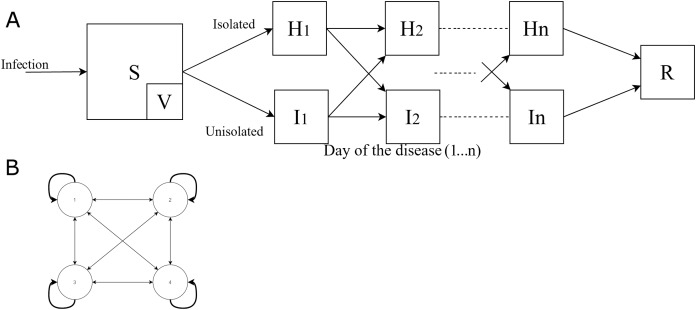Figure 1. The model.
(A) Dynamics of the outbreak model and its major variables. S, susceptible; H, infected isolated; I, infected unisolated; R, recovered; and V, vaccinated or immune (if a vaccine is available). The students are stratified to cohorts, and n daily disease stages distinguished by severity of symptoms and viral shedding (9 daily stages of viral shedding for influenza and 32 stages for COVID-19, see Supplemental Digital Content—Expanded Methods). The cohort structure and other parameters are adjustable to model outbreaks in different settings and by different pathogens. Vaccination is available only for some outbreaks and generally has incomplete coverage and efficacy. (B) Illustration of the typical connectivity pattern between cohorts in the school where the thickness of the arrows illustrates the greater risk of transmission within cohort than across cohorts (shown is the case of four cohorts).

